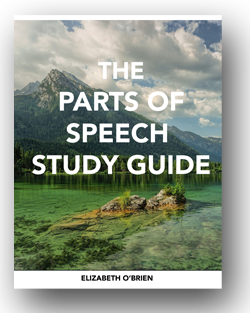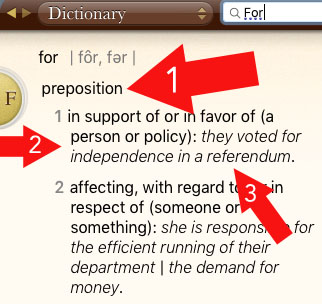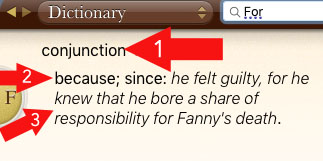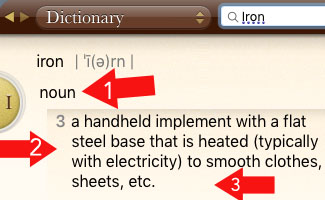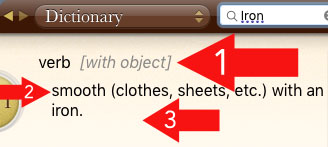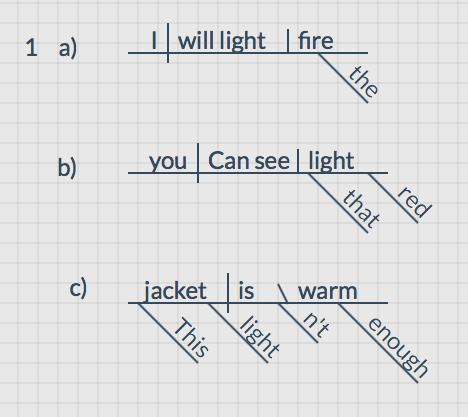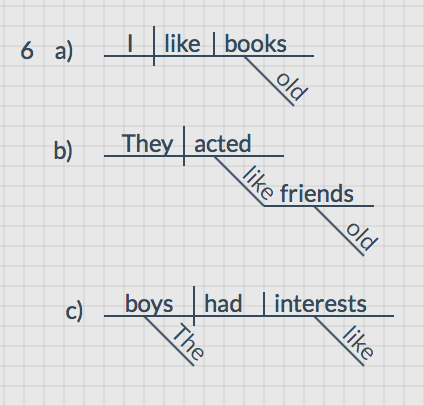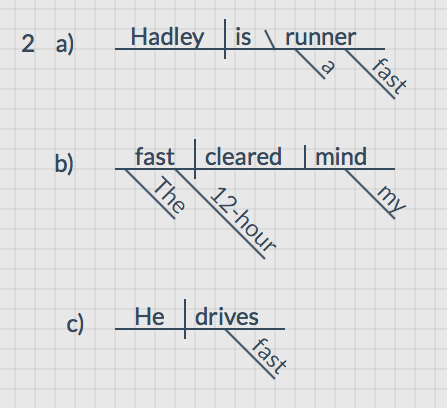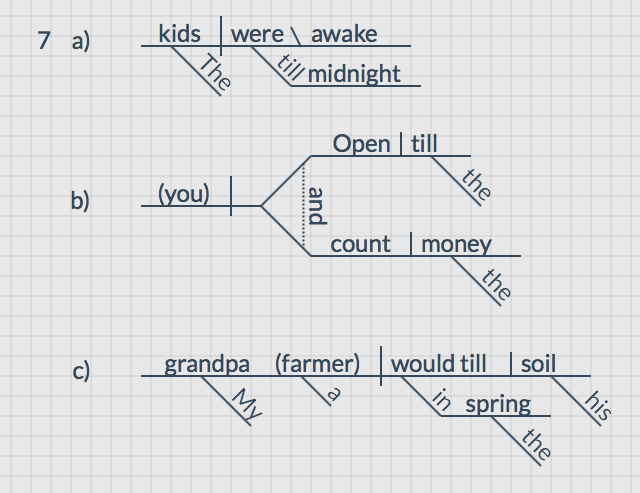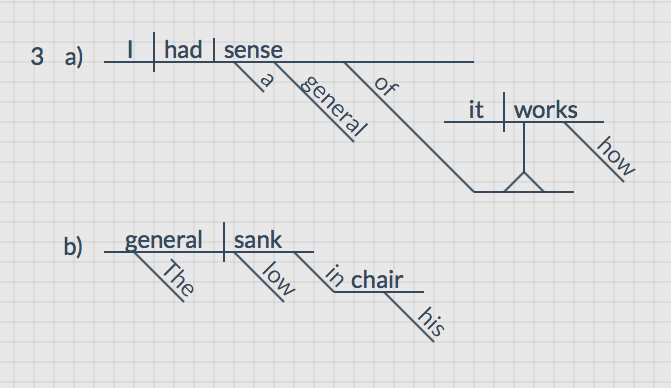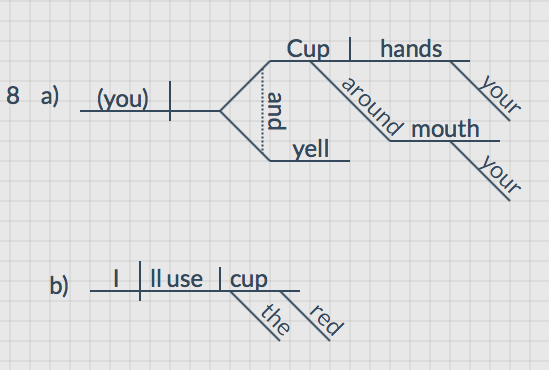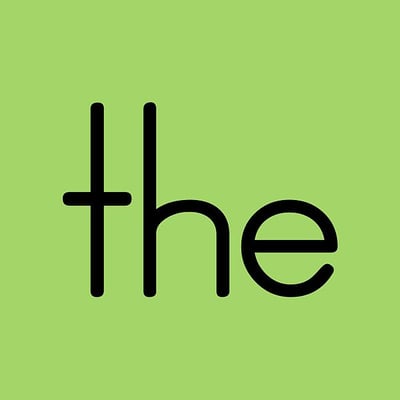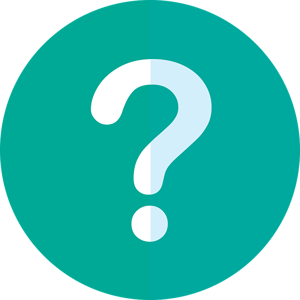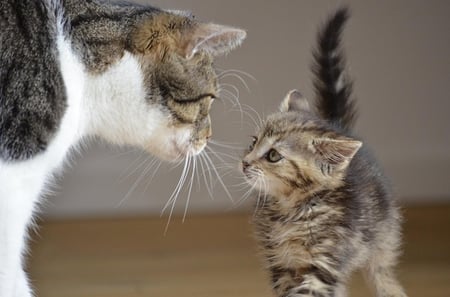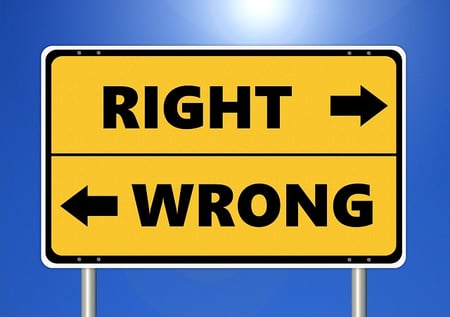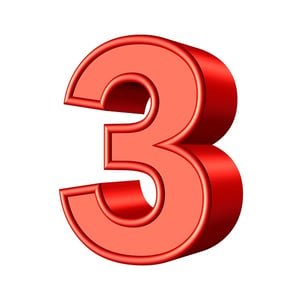If you’ve ever found yourself wondering what part of speech a word is, you’re not alone. In this lesson, we’ll explore how to answer that question as well as why that answer can seem a bit confusing. You’ll also find a quiz at the bottom of the page so that you can test yourself, along with a free PDF download. Jackpot!
Would you like to make this lesson more interactive?
Download the free ebook.
If you’d like to fill out your answers as you move through this lesson, download the guide before you watch the video.
If you’d like to print it out and you’re serious about conserving the ink in your printer, print only pages 4, 9, 10, and 11.
Pop quiz, hot shot! Let’s say you’re at the grocery store deciding between chunky and creamy peanut butter (tough choice) when someone walks up to you and asks, «What part of speech is the word love?»
Obviously, the first thing to do is run away from this person. But then, your mind might linger on that question, and you might start to wonder Hmm … what part of speech is the word love anyway?
At that point, you would probably think of some example sentences to figure it out.
I love peanut butter.
From this sentence, you might conclude that love is a verb since you know that verbs express action, and love is showing an action in this sentence.
You wouldn’t be wrong, but then you might think of this sentence:
Love for peanut butter brought me to the store today.
Wait a minute! Here, love is a noun. It’s an idea, and it’s the subject of the sentence. What’s the deal? How can love be a verb and a noun?
Here’s a secret about the parts of speech that many people don’t realize:
Many words can function as more than one part of speech.
They will only be doing one part-of-speech job at a time, though. In our example sentences above, we can see that love can be a verb and a noun, and we can also see that it’s doing just one of those jobs in each sentence.
How can you figure out what part(s) of speech a word can be, and how will you know what the word is acting as in any given sentence?
The first thing to do is to study the parts of speech and understand how they work.
Here’s what you can do after you have a sense of what the parts of speech are and how they work:
What part(s) of speech can this word be?
Look up the word in a dictionary. Dictionaries will show you the possible parts of speech that a word can function as. You can use a dictionary that’s an actual book, an online dictionary, or your device’s built-in dictionary. The dictionary will list each word’s possible part of speech, and it will give you definitions for all of the meanings of a word within each part of speech.
What part of speech is this word in this sentence?
In order to figure out how a word is functioning, we need to look at the word within the context of a sentence. Look over your sentence, and then open up your dictionary. Match the meaning of the word in your sentence with the most fitting dictionary definition. Then you’ll be able to tell what part of speech it is in your sentence.
Let’s look at two examples of words acting as different parts of speech.
We’ll look at the words for and iron, and we’ll see them acting as different parts of speech. We’ll also take a peek at what the dictionary says for each word.
What part of speech are the words in bold?
I asked for pie.
I cried, for I knew that the pie was gone.
Where is the iron?
Please iron my shirt.
For
I asked for pie. (preposition)
1. Just below the word that you look up, you’ll find a listing for a part of speech. The first listing is usually the most common way that the word is used. For is most commonly used as a preposition.
2. Next, you’ll find definitions of the word for each part of speech. If there is more than one definition, they’ll be numbered. There are many definitions for for as a preposition, and here you can see two.
3. After the definition, you’ll often find an example of how to use the word as that part of speech and definition. You can see the examples in italics.
I cried, for I knew that the pie was gone. (conjunction)
1. Below all of the definitions for for as a preposition, we can see a listing for another part of speech. It’s here that we see that for can also be a conjunction.
2. Here’s the definition. It’s not numbered because there is only one entry for for as a conjunction.
3. Here is an example sentence for us. (It’s strange, though, that they also used for as a preposition in this example as well as a conjunction!)
Iron
Where is the iron? (noun)
1. The first part of speech listed under iron is noun.
2. The first two definitions of iron as a noun weren’t the ones used in the sentence above, but the third entry was what I was looking for.
3. They don’t give us an example sentence. Boohoo!
Please iron my shirt. (verb)
1. Underneath all of the definitions for iron as a noun, I came here which let me know that iron can also be used as a verb.
2. There’s only one definition for iron as a verb, so they didn’t number this entry.
3. Again, there’s no example sentence. Perhaps everyone at the dictionary company called in sick on the day that they had to write example sentences for iron.
Test Yourself
I. Label the Parts of Speech
Directions: Name the part of speech for the underlined word in each sentence. Use a dictionary if you need one. For extra credit, diagram the sentences. 
1. LIGHT
a) I will light the fire.
b) Can you see that red light?
c) This light jacket isn’t warm enough.
2. FAST
a) Hadley is a fast runner.
b) The 12-hour fast cleared my mind.
c) He drives fast!
3. GENERAL
a) I had a general sense of how it works.
b) The general sank low in his chair.
4. BEFORE
a) Practice piano before you play with your friends.
b) Practice piano before dinner.
5. ROLL
a) Roll the dice.
b) I will eat the soup with a roll.
6. LIKE
a) I like old books.
b) They acted like old friends.
c) The boys had like interests.
7. TILL
a) The kids were awake till midnight.
b) Open the till and count the money.
c) My grandpa, a farmer, would till his soil in the spring.
8. CUP
a) Cup your hands around your mouth and yell.
b) I’ll use the red cup.
9. DRIVE
a) The long drive through the countryside lifted my spirits.
b) I always drive within the speed limit.
10. BLUE
a) Everyone in the family photo wore blue.
b) Jackie lives in the blue house.
Would you like to download this lesson?
- 20 Pages
- Includes all of the instructions and exercises on this page
- 4 pages with blank space to write answers
- 7 pages of answers (All 24 sentence diagrams included)
- Printable
- If you only want to print out the pages where you’ll be writing (I’m looking at you, expensive ink cartridges.), print pages 4, 9, 10, and 11.
- FREE
II. Write Your Own Sentences
Directions: Write your own sentences using the words below. Make sure the word is being used as the part of speech indicated on the left side. Underline the word in your sentence. The first one is done for you. Feel free to use a dictionary!
1. Drive
Noun: The long drive through the countryside lifted my spirits.
Verb: I always drive within the speed limit.
2. Baby
Noun: ___________________________________
Adjective: ________________________________
Verb: ___________________________________
3. Up
Preposition: ________________________________
Adverb: ___________________________________
Answers
I. Label the Parts of Speech
1. LIGHT
a) I will light the fire. VERB
b) Can you see that red light? NOUN
c) This light jacket isn’t warm enough. ADJECTIVE
6. LIKE
a) I like old books. VERB
b) They acted like old friends. PREPOSITION
c) The boys had like interests. ADJECTIVE
2. FAST
a) Hadley is a fast runner. ADJECTIVE
b) The 12-hour fast cleared my mind. NOUN
c) He drives fast! ADVERB
7. TILL
a) The kids were awake till midnight. PREPOSITION
b) Open the till and count the money. NOUN
c) My grandpa, a farmer, would till his soil in the spring. VERB
3. ABOVE
a) I had a general sense of how it works. ADJECTIVE
b) The general sank low in his chair. NOUN
8. CUP
a) Cup your hands around your mouth and yell. VERB
b) I’ll use the red cup. NOUN
4. BEFORE
a) Practice piano before you play with your friends. CONJUNCTION
b) Practice piano before dinner. PREPOSITION
9. DRIVE
a) The long drive through the countryside lifted my spirits. NOUN
b) I always drive within the speed limit. VERB
5. ROLL
a) Roll the dice. VERB
b) I will eat the soup with a roll. NOUN
10. BLUE
a) Everyone in the family photo wore blue. NOUN
b) Jackie lives in the blue house. ADJECTIVE
* The sentence diagrams for 4, 5, 9, and 10 are available in the downloadable version of this lesson.
Answers for II. Write Your Own Sentences are also available in the free, downloadable version of this lesson.
Would you like to download this lesson?
- 20 Pages
- Includes all of the instructions and exercises on this page
- 4 pages with blank space to write answers
- 7 pages of answers (All 24 sentence diagrams included)
- Printable
- If you only want to print out the pages where you’ll be writing (I’m looking at you, expensive ink cartridges.), print pages 4, 9, 10, and 11.
- FREE
Would you like to see another example of this concept? Let’s look at how the word balance can be a noun or a verb, and how it can help you think about your life.
In the sentence:
My philosophy professor demonstrated not only how to reason persuasively but also how to avoid logical fallacies.
What part of speech is the word how?
Nonnal
4,1621 gold badge14 silver badges30 bronze badges
asked Nov 29, 2015 at 17:04
9
Both the hows there are adverbs that premodify the respective to-infinitive clauses. The first how premodifies to reason persuasively, and the second to avoid logical fallacies.
The fact that both how to reason persuasively and how to avoid logical fallacies are complements of the verb demonstrated doesn’t change the part of speech of how at all, because how itself is not a complement of the verb. Only those clauses are.
answered Mar 29, 2016 at 5:59
JK2JK2
5,8945 gold badges45 silver badges105 bronze badges
It is Adverb and the mood is interrogative
answered Nov 29, 2015 at 17:27
1
Download Article
Download Article
Parts of speech are categories that are used to describe each word’s function in a sentence. The best way to identify a word’s part of speech is to think about what role the word plays in the sentence, but there are also a few clues that can help you figure out the part of speech if you are unsure about the word’s function.
-
1
Identify naming words as nouns. A noun is any word that names a person, place, thing, or idea. Nouns can be concrete (Alice, dog, table, etc.) or abstract (beauty, independence, cycle, etc.).[1]
- Proper nouns are used to name a specific person, place, or thing, and the main words are always capitalized (Fred, New York, the Declaration of Independence).
- Nouns can be either singular or plural.
- Nouns can be possessive, in which case they typically end in ‘s or s’.
-
2
Know that pronouns stand in for nouns. Sometimes, a noun is not always named. Words that do not directly name a person, place, thing, or idea, but take the place of a word that does, are pronouns.[2]
- Some pronouns stand in for people’s names (he, our, they, hers, etc.).
- Other pronouns represent an object or idea (it, these, this, etc.).
- Pronouns may also stand in for very indefinite nouns that may be difficult to name without the use of a pronoun (everyone, no one, something, etc).
Advertisement
-
3
Recognize action words as verbs. A verb is any word that is used to express an action (run, cleaned, driven, etc) or being (is, was, been, etc). Verbs have multiple tenses that express when the action took place.[3]
- Auxiliary verbs (also known as helping verbs) are words that are used to change the tense of the main verb (will, did, would, etc.). These are still considered verbs.
-
4
Learn that adjectives modify nouns and pronouns. An adjective is any word that is used to modify or describe a noun or pronoun (blue, many, smart, etc.). Adjectives typically answer questions like «how many?», «what kind?», or «which one?»[4]
- Numbers are considered adjectives when they are used to answer the question «how many?»
- Articles (a, an, and the) are considered adjectives by many because they answer the question «which one?» However, some people consider articles to be a separate part of speech.
-
5
Know that adjective and verb modifiers are adverbs. An adverb is similar to an adjective in that it is used to describe or modify. Instead of modifying a noun or pronoun, however, an adverb modifies a verb or adjective (happily, extremely, then, etc.). Adverbs typically answer the question «how?», «why», «when?», or «how much?»[5]
- Adverbs may also modify other adverbs. (I ran very quickly.)
-
6
Understand that prepositions express relationships. A preposition is a word or phrase that is used to show the relationship between noun or pronoun and another element in the sentence (at, by, in, to, from, with, etc.). Prepositions are typically very short words.[6]
-
7
Identify words used to join clauses as conjunctions. A conjunction is a word that connects other words, phrases, or clauses (and, but, or, because, etc).[7]
- Coordinating conjunctions are used to join two clauses that are equally important to the sentence. There are 7 coordinating conjunctions: and, but, for, nor, or, so, and yet. (I like cats, but I don’t like dogs.)
- Subordinating conjunctions are used to join a main clause and a subordinate clause, which is less important to the sentence. (I went outside, although it was raining.)
-
8
Recognize exclamations as interjections. An interjection is a word or phrase used to express an emotion or feeling, such as surprise. (oh, wow, my goodness, etc). Interjections are capable of standing alone and are not grammatically related to the rest of the sentence. However, they can also be included in a sentence, separated by parenthesis, dashes, or comas on either side of the interjection.[8]
Advertisement
-
1
Learn the Subject-Verb-Object rule. Most sentences in the English language have the same basic structure: the sentence begins with the subject, followed by the verb, and then the object (if the sentence has an object). There are exceptions to this rule, but understanding the norm can help you identify the parts of speech in most sentences.[9]
- Both the subject and object of a sentence will contain a noun or pronoun. This means that a sentence that has both a subject and an object will contain a noun or pronoun both before and after the verb. (I ate the apple.)
- The subject and object may contain modifiers such as adjectives as well.
- When the sentence has a direct object, it will come directly after the verb. (I like cookies.) When the sentence has an indirect object, it will come after a preposition. (I gave the card to Frank.)
-
2
Understand correct adjective and adverb placement. Although there are certainly exceptions to the rules, the placement of adjectives and adverbs is usually very predictable. Understanding where these words are most often found can help you identify them in sentences.
- Adjectives are almost always found before nouns and pronouns (We look at a red dress.) or after the linking verb «to be» (The dress is red.)[10]
- When adverbs are used to modify adjectives, they are almost always found right before the adjective. (The meal was truly delicious.)[11]
- When adverbs are used to modify verbs, they may be found before the subject (Later I will walk to school.), directly before the verb (I will carefully clean the artifacts .), or directly after the verb. (I go to the park frequently.)
- Adjectives are almost always found before nouns and pronouns (We look at a red dress.) or after the linking verb «to be» (The dress is red.)[10]
-
3
Identify clauses and phrases to find conjunctions. Because conjunctions are typically found between two clauses or phrases, you should be able to identify one by looking for the clauses or phrases that it joins together. If the word comes between the two clauses or phrases and seems to join them, it is likely a conjunction.
- Conjunctions like «and» and «but» are sometimes used at the beginning of a sentence, although this is more rare. When it is done, you should be able to identify the other clause or phrase in the previous sentence.
-
4
Use exclamation points to identify interjections. Some interjection are followed by exclamation points because they express emotional responses.[12]
If you see an exclamation point, the word proceeding it may be an interjection, although exclamation points are used after other types of words as well.- Not all interjections are marked by exclamation points. Don’t rely on exclamations as the only way to recognize interjections.
- Another clue that a word might be an interjection is that it is used alone. If there are other words in the sentence, it is less likely to be an interjection.
-
5
Look for nouns and pronouns to identify prepositions. Prepositions are typically found before noun or pronoun phrases. (I went to the store.) This is because the preposition expresses the relationship of the noun or the pronoun to the previous part of the sentence.
- Keep in mind there may be an adjective, adverb, and/or article between the preposition and the noun or pronoun. These modifiers are all considered to be part of the noun or pronoun phrase. (We paid for the very expensive jeans.)
Advertisement
-
1
Recognize suffixes that are common in nouns. Although not all nouns contain one of these suffixes, many do. Understanding that they are most common in nouns can help you identify the part of speech of a word, even if you do not know its meaning. Look for the following suffixes to help identify nouns:[13]
- -ion (population)
- -sion (tension)
- -tion (attention)
- -acy (accuracy)
- -age (image)
- -ance (allegiance)
- -ence (permanence)
- -hood (childhood)
- -ar (scholar)
- -or (editor)
- -ism (idealism)
- -ist (realist)
- -ment (government)
- -ness (sadness)
- -y (beauty)
- -ity (capacity)
-
2
Know which suffixes are common in adjectives. Just as with nouns, there are certain suffixes that are most commonly used with adjectives (although there are exceptions). Committing the following suffixes to memory may help you identify adjectives in sentences more easily:[14]
- -al (clerical)
- -ful (wonderful)
- -ly (friendly)
- -ic (chronic)
- -ish (squeamish)
- -like (childlike)
- -ous (contagious)
- -y (yappy)
- -ate accurate
- -able (laughable)
- -ible (horrible)
-
3
Learn which suffixes are common in verbs. There are a few suffixes that are used with verbs more often than any other type of word. If you see one of the following suffixes on a word, it is likely that it is a verb:[15]
- -ify (typify)
- -ate (proliferate)
- -ize (rationalize)
- -en (tighten)
-
4
Remember that most adverbs share a common suffix. Adverbs are by far the easiest parts of speech to identify using suffix clues. This is because the majority of adverbs end in the suffix -ly (merrily, wonderfully, quickly, etc.). If you see a word that ends in this suffix, there is a very good chance that it is an adverb.[16]
- There are some words that end in -ly that are not adverbs (butterfly), so be careful not to overgeneralize.
- There are also a few adverbs that do not end in -ly (well, fast, very, etc.).
Advertisement
Practice Questions and Answers
Add New Question
-
Question
What part of speech is the word «has»?
«Has» is a verb because it expresses an action. Depending on the sentence it is used in, it may be a main verb (He has the flu) or an auxiliary verb (She has traveled to Spain), but either way, it is still a verb.
-
Question
What part of speech is an article?
Articles (a, an, and the) are considered by some to be adjectives because they modify nouns. Other people consider articles to be a completely separate part of speech.
-
Question
In the sentence «Spring flowers are very beautiful» what part of speech is «spring»?
«Spring» is an adjective because it modifies the noun «flowers.»
See more answers
Ask a Question
200 characters left
Include your email address to get a message when this question is answered.
Submit
Advertisement
-
Context is key, as some words can act as multiple different parts of speech, depending on their role in a sentence.
Advertisement
References
About This Article
Article SummaryX
To identify different parts of speech, analyze the function that the word plays in a sentence. If the word names a person, place, thing, or idea, it is a noun. Label a word as a pronoun if it takes the place of a noun. If you see a word that expresses an action, that is a verb, and words that modify a verb are adverbs. If a word modifies a noun or pronoun, it is an adjective. To learn how to identify prepositions, conjunctions, and interjections, read on!
Did this summary help you?
Thanks to all authors for creating a page that has been read 337,780 times.
Reader Success Stories
-
«I love this… The explanation was quite much understandable.»
Did this article help you?
When you start breaking it down, the English language is pretty complicated—especially if you’re trying to learn it from scratch! One of the most important English words to understand is the.
But what part of speech is the word the, and when should it be used in a sentence? Is the word the a preposition? Is the a pronoun? Or is the word the considered a different part of speech?
To help you learn exactly how the word the works in the English language, we’re going to do the following in this article:
- Answer the question, «What part of speech is the?»
- Explain how to use the correctly in sentences, with examples
- Provide a full list of other words that are classified as the same part of speech as the in the English language
Okay, let’s get started learning about the word the!
In the English language the word the is classified as an article, which is a word used to define a noun. (More on that a little later.)
But an article isn’t one of the eight parts of speech. Articles are considered a type of adjective, so «the» is technically an adjective as well. However, «the» can also sometimes function as an adverb in certain instances, too.
In short, the word «the» is an article that functions as both an adjective and an adverb, depending on how it’s being used. Having said that, the is most commonly used as an article in the English language. So, if you were wondering, «Is the a pronoun, preposition, or conjunction,» the answer is no: it’s an article, adjective, and an adverb!
While we might think of an article as a story that appears in a newspaper or website, in English grammar, articles are words that help specify nouns.
The as an Article
So what are «articles» in the English language? Articles are words that identify nouns in order to demonstrate whether the noun is specific or nonspecific. Nouns (a person, place, thing, or idea) can be identified by two different types of articles in the English language: definite articles identify specific nouns, and indefinite articles identify nonspecific nouns.
The word the is considered a definite article because it defines the meaning of a noun as one particular thing. It’s an article that gives a noun a definite meaning: a definite article. Generally, definite articles are used to identify nouns that the audience already knows about. Here’s a few examples of how «the» works as a definite article:
We went to the rodeo on Saturday. Did you see the cowboy get trampled by the bull?
This (grisly!) sentence has three instances of «the» functioning as a definite article: the rodeo, the cowboy, and the bull. Notice that in each instance, the comes directly before the noun. That’s because it’s an article’s job to identify nouns.
In each of these three instances, the refers to a specific (or definite) person, place, or thing. When the speaker says the rodeo, they’re talking about one specific rodeo that happened at a certain place and time. The same goes for the cowboy and the bull: these are two specific people/animals that had one kinda terrible thing happen to them!
It can be a bit easier to see how definite articles work if you see them in the same sentence as an indefinite article (a or an). This sentence makes the difference a lot more clear:
A bat flew into the restaurant and made people panic.
Okay. This sentence has two articles in it: a and the. So what’s the difference? Well, you use a when you’re referring to a general, non-specific person, place, or thing because its an indefinite article. So in this case, using a tells us this isn’t a specific bat. It’s just a random bat from the wild that decided to go on an adventure.
Notice that in the example, the writer uses the to refer to the restaurant. That’s because the event happened at a specific time and at a specific place. A bat flew into one particular restaurant to cause havoc, which is why it’s referred to as the restaurant in the sentence.
The last thing to keep in mind is that the is the only definite article in the English language, and it can be used with both singular and plural nouns. This is probably one reason why people make the mistake of asking, «Is the a pronoun?» Since articles, including the, define the meaning of nouns, it seems like they could also be combined with pronouns. But that’s not the case. Just remember: articles only modify nouns.
Adjectives are words that help describe nouns. Because «the» can describe whether a noun is a specific object or not, «the» is also considered an adjective.
The as an Adjective
You know now that the is classified as a definite article and that the is used to refer to a specific person, place, or thing. But defining what part of speech articles are is a little bit tricky.
There are eight parts of speech in the English language: nouns, pronouns, verbs, adverbs, adjectives, prepositions, conjunctions, and interjections. The thing about these eight parts of speech in English is that they contain smaller categories of types of words and phrases in the English language. Articles are considered a type of determiner, which is a type of adjective.
Let’s break down how articles fall under the umbrella of «determiners,» which fall under the umbrella of adjectives. In English, the category of «determiners» includes all words and phrases in the English language that are combined with a noun to express an aspect of what the noun is referring to. Some examples of determiners are the, a, an, this, that, my, their, many, few, several, each, and any. The is used in front of a noun to express that the noun refers to a specific thing, right? So that’s why «the» can be considered a determiner.
And here’s how determiners—including the article the—can be considered adjectives. Articles and other determiners are sometimes classified as adjectives because they describe the nouns that they precede. Technically, the describes the noun it precedes by communicating specificity and directness. When you say, «the duck,» you’re describing the noun «duck» as referring to a specific duck. This is different than saying a duck, which could mean any one duck anywhere in the world!
When «the» comes directly before a word that’s not a noun, then it’s operating as an adverb instead of an adjective.
The as an Adverb
Finally, we mentioned that the can also be used as an adverb, which is one of the eight main parts of speech we outlined above. Adverbs modify or describe verbs, adjectives, or other adverbs, but never modify nouns.
Sometimes, the can be used to modify adverbs or adjectives that occur in the comparative degree. Adverbs or adjectives that compare the amounts or intensity of a feeling, state of being, or action characterizing two or more things are in the comparative degree. Sometimes the appears before these adverbs or adjectives to help convey the comparison!
Here’s an example where the functions as an adverb instead of an article/adjective:
Lainey believes the most outrageous things.
Okay. We know that when the is functioning as an adjective, it comes before a noun in order to clarify whether it’s specific or non-specific. In this case, however, the precedes the word most, which isn’t a noun—it’s an adjective. And since an adverb modifies an adjective, adverb, or verb, that means the functions as an adverb in this sentence.
We know that can be a little complicated, so let’s dig into another example together:
Giovanni’s is the best pizza place in Montana.
The trick to figuring out whether the article the is functioning as an adjective or an adverb is pretty simple: just look at the word directly after the and figure out its part of speech. If that word is a noun, then the is functioning as an adjective. If that word isn’t a noun, then the is functioning like an adverb.
Now, reread the second example. The word the comes before the word best. Is best a noun? No, it isn’t. Best is an adjective, so we know that the is working like an adverb in this sentence.
How to Use The Correctly in Sentences
An important part of answering the question, «What part of speech is the word the?» includes explaining how to use the correctly in a sentence. Articles like the are some of the most common words used in the English language. So you need to know how and when to use it! And since using the as an adverb is less common, we’ll provide examples of how the can be used as an adverb as well.
Using The as an Article
In general, it is correct and appropriate to use the in front of a noun of any kind when you want to convey specificity. It’s often assumed that you use the to refer to a specific person, place, or thing that the person you’re speaking to will already be aware of. Oftentimes, this shared awareness of who, what, or where «the» is referring to is created by things already said in the conversation, or by context clues in a given social situation.
Let’s look at an example here:
Say you’re visiting a friend who just had a baby. You’re sitting in the kitchen at your friend’s house while your friend makes coffee. The baby, who has been peacefully dozing in a bassinet in the living room, begins crying. Your friend turns to you and asks, «Can you hold the baby while I finish doing this?»
Now, because of all of the context surrounding the social situation, you know which baby your friend is referring to when they say, the baby. There’s no need for further clarification, because in this case, the gives enough direct and specific meaning to the noun baby for you to know what to do!
In many cases, using the to define a noun requires less or no awareness of an immediate social situation because people have a shared common knowledge of the noun that the is referring to. Here are two examples:
Are you going to watch the eclipse tomorrow?
Did you hear what the President said this morning?
In the first example, the speaker is referring to a natural phenomenon that most people are aware of—eclipses are cool and rare! When there’s going to be an eclipse, everyone knows about it. If you started a conversation with someone by saying, «Are you going to watch the eclipse tomorrow?» it’s pretty likely they’d know which eclipse the is referring to.
In the second example, if an American speaking to another American mentions what the President said, the other American is likely going to assume that the refers to the President of the United States. Conversely, if two Canadians said this to one another, they would likely assume they’re talking about the Canadian prime minister!
So in many situations, using the before a noun gives that noun specific meaning in the context of a particular social situation.
Using The as an Adverb
Now let’s look at an example of how «the» can be used as an adverb. Take a look at this sample sentence:
The tornado warning made it all the more likely that the game would be canceled.
Remember how we explained that the can be combined with adverbs that are making a comparison of levels or amounts of something between two entities? The example above shows how the can be combined with an adverb in such a situation. The is combined with more and likely to form an adverbial phrase.
So how do you figure this out? Well, if the words immediately after the are adverbs, then the is functioning as an adverb, too!
Here’s another example of how the can be used as an adverb:
I had the worst day ever.
In this case, the is being combined with the adverb worst to compare the speaker’s day to the other days. Compared to all the other days ever, this person’s was the worst…period. Some other examples of adverbs that you might see the combined with include all the better, the best, the bigger, the shorter, and all the sooner.
One thing that can help clarify which adverbs the can be combined with is to check out a list of comparative and superlative adverbs and think about which ones the makes sense with!
3 Articles in the English Language
Now that we’ve answered the question, «What part of speech is the?», you know that the is classified as an article. To help you gain a better understanding of what articles are and how they function in the English language, here’s a handy list of 3 words in the English language that are also categorized as articles.
|
Article |
Type of Article |
What It Does |
Example Sentence |
|
The |
Definite Article |
Modifies nouns by giving them a specific meaning |
Please fold the laundry. Do you want to go to the concert? |
|
A |
Indefinite Article |
Modifies a noun that refers to a general idea; appears before nouns that begin with a consonant. |
Do you want to go to a concert? |
|
An |
Indefinite Article |
Modifies a noun that refers to a general idea; appears before nouns that begin with a vowel. |
Do you want to go to an arcade? Let’s get an iguana. |
What’s Next?
If you’re looking for more grammar resources, be sure to check out our guides on every grammar rule you need to know to ace the SAT (or the ACT)!
Learning more about English grammar can be really helpful when you’re studying a foreign language, too. We highly recommend that you study a foreign language in high school—not only is it great for you, it looks great on college applications, too. If you’re not sure which language to study, check out this helpful article that will make your decision a lot easier.
Speaking of applying for college…one of the most important parts of your application packet is your essay. Check out this expert guide to writing college essays that will help you get into your dream school.
Need more help with this topic? Check out Tutorbase!
Our vetted tutor database includes a range of experienced educators who can help you polish an essay for English or explain how derivatives work for Calculus. You can use dozens of filters and search criteria to find the perfect person for your needs.
Have friends who also need help with test prep? Share this article!
About the Author
Ashley Sufflé Robinson has a Ph.D. in 19th Century English Literature. As a content writer for PrepScholar, Ashley is passionate about giving college-bound students the in-depth information they need to get into the school of their dreams.
It is a fact that almost every word of English has got the capacity to be employed as a different part of speech. At one place, a particular word may be used as a noun, at another as a verb, and yet at another place as an adjective.
These words enable the learners of the English language to understand the behavior of a particular word in various positions.
Importance of Parts of Speech in Communication
As you know, English sentences are used to communicate a complete thought. The importance of parts of speech lies in their proper utilization, which can help your understanding and confidence grow immensely.
Proper usage of parts of speech means that you can impart clear messages and understand them because you know the rules of the language.
Each word in a sentence belongs to one of the eight parts of speech according to the work it is doing in that sentence. There are 8 parts of speech.
- Noun
- Verb
- Adjective
- Adverb
- Pronoun
- Prepositions
- Conjunctions
- Interjections
1 – Noun (Naming words)
The nouns stand for the names of people, places, animals, and things. The word noun means name. Look at these sentences.
“John lives in Chicago. He has two bikes. He is fond of riding bikes.”
In the above example, John is the name. We cannot use the same name again and again in different sentences. Here, we used “he” in the next two sentences instead of “John”. “He” is called the pronoun.
Types of nouns are
1.1 – Common Noun
It describes a person, place, and thing.
Examples: City, country, town, boy.
1.2 – Proper Noun
It includes a particular person, place, thing, or idea and begins with a capital letter.
Examples: Austria, Manchester, United Kingdom, etc.
1.3 – Abstract Noun
An abstract noun describes names, ideas, feelings, emotions or qualities, the subject of any paragraph comes under this category. It does not take “the”.
Examples: grief, loss, happiness, greatness.
1.4 – Concrete Noun
It describes material things, persons or places. The existence of that thing can be physically observed.
Examples: Book, table, car, etc.
1.5 – Countable and Uncountable Noun
Countable nouns can be singular or plural. It can be counted.
Examples: Ships, cars, buses, books, etc.
The uncountable noun is neither singular nor plural. It cannot be counted.
Examples: Water, milk, juice, butter, music, etc.
1.6 – Collective Noun
It includes the group and collection
people, things or ideas. It is in unit form and is considered as singular.
Examples: Staff of office, group of visitors.
However, people and police can be
considered both singular and plural.
1.7 – Possessive Noun
It shows ownership or relationship.
Examples: Jimmy’s pen.
Further Reading: 11 Types of Nouns with Examples
2 – Verb (Saying words)
These are used for saying something
about persons or things. The verb is concerned with doing or being.
Examples
- A hare runs (action) very fast.
- Aslam is a good student.
Types of verbs
2.1 – Actions verbs
(run, move, write etc)
2.2 – Linking verbs
(to be (is, am, are, was, were), seem, feel, look, understand)
2.3 – Auxiliary (helping) verbs
(have, do, be)
2.4 – Modal Verbs
(can, could, may, might, will/shall)
2.5 – Transitive verbs
It takes an object.
Example – He is reading a newspaper.
2.6 – Intransitive verbs
It does not take the object.
Example – He awakes.
Further Reading: What are the verbs in English?
3 – Adjectives (describing words)
These are joining to nouns to describe
them.
Examples
- A hungry wolf.
- A brown wolf.
- A lazy boy.
- A tall man.
It is used before a noun and after a linking verb.
Before noun example
A new brand has been launched.
After linking verb example
Imran is rich.
It is used to clarify nouns.
Example: smart boy, blind man
Types of adjectives
3.1 – Simple degree
He is intelligent.
3.2 – Comparative
Ali is intelligent than Imran.
3.3 – Superlative
Comparison of one person with class,
country or world. In this type “the” is used.
Example: Ali is the wisest boy.
3.4 – Demonstrative adjective
It points out a noun. These are four
in number.
This That These Those
3.5 – Indefinite adjectives
It points out nouns. They often tell
“how many” or “how much” of something.
Interrogative adjectives: it is used to ask questions
Examples
- Which book?
- What time?
- Whose car?
Further Reading: More About Adjectives
4 – Adverbs
Describing words that are added to verbs. Just as adjectives are added to describe them, adverbs are added to verbs to modify their meaning. The word “modify” means to enlarge the meaning of the adverbs.
Examples
- Emma sings beautifully. (used with verb)
- Cameron is extremely clever. (used with adjective)
- This motor car goes incredibly fast. (used with another adverb)
Types of adverb
4.1 – Adverb of manner
This type of adverb deals with the
action something
Example
- I walk quickly.
- He wrote slowly.
4.2 – Adverb of place
Happening of something or the place where it happens.
Examples:
There was somebody sitting nearby.
Here, these, upstairs, nowhere everywhere, outside, in, out, are called adverb of place.
4.3 – Adverb of time
It determines the time of the happening of something.
Examples
- She went there last night.
- Have you seen him before?
- He wrote a letter yesterday.
Tomorrow, today, now, then,
yesterday, already, ago.
4.4 – Linking adverbs (then, however)
It creates a connection between two clauses or sentences.
Example
There will be clouds in Lahore. However, the sun is expected in Multan.
Note: Besides modifying the meaning of a verb, adverbs also modify adjectives and other adverbs.
Examples
- It is a very large house.
- He is too weak to walk.
- He ran too fast.
Further Reading: 11 Types of Adverbs with Examples
5 – Pronouns
Words that are used instead of nouns to avoid tiresome repetition. Instead of using the word man in a composition, we often write he, him, himself. In place of the word “woman”, we write she, her, or herself. For both the nouns ‘men’ and ‘women’ we use, they, them, themselves.
Some of the most common pronouns are
Singular: I, he, she, it, me, him,
her
Plural: We, they, out, us, them.
Examples
Imran was hurt. He didn’t panic.
He checked the mobile. It still
worked.
Types of Pronouns
It stands instead of persons. They have different forms according to the person who is supposed to be speaking.
First person: I, we, me, us, mine, our, ourselves.
Second person: thou, you, there.
Third person: He, she, it, his, him
5.1 – Possessive pronouns
Such as mine, ours, yours, hers and theirs.
- This book is mine.
- My horse and yours are tired.
5.2 – Relative pronoun
Who, whom, which and they are called relative pronouns. They are called relative because they relate to some word in the main clause. The word to which pronoun relates is called the antecedent.
Example
I saw a boy who was going.
In this sentence, who is the relative pronoun and boy is its antecedent.
This is the girl who won the prize.
“which” is used for animals and things.
The dog which barks.
That is used instead of who or which in this case.
This is the best picture that I ever saw.
5.3 – Interrogative pronouns
It is used to introduce or create an asking position in a sentence. Who, whom, which, and whose are interrogative pronouns.
Examples
Who wrote this book? (for persons
only)
What is your name? (for things)
Which boy here is your friend?
5.4 – Demonstrative pronoun
It points out a person, thing, place
or idea. This, that, these and those are called demonstrative pronouns.
That is a circuit-breaker.
These are cups of a team.
5.5 – Reflexive pronoun
The type of pronoun that ends in self or selves is called a reflexive pronoun.
Examples: myself, ourselves, yourself, herself, himself, itself, themselves.
Use in sentence: They worked hard to
get out themselves from the debt.
Indefinite pronoun: An indefinite
pronoun does not refer to a specific person, place thing or idea.
Examples
Nothing lasts forever.
No one can make this design.
Further Reading: Different Types of Pronouns with 60+ Examples
6 – Prepositions
Words placed before a noun or pronoun
to show how the person or thing denoted stands in relation to some other person
or thing.
Examples: A house on a hill. Here, the word “on” is a preposition.
The noun and pronoun that follow the preposition are called its object. We can identify prepositions in the following examples.
In 2006, in March, in the garden,
On 14th August, on Friday, on the table
At 8:30 pm, at 9 o’clock, at the door, at noon, at night, at midnight
However, we use “in” for morning and evening.
Further Reading: Preposition Usage and Examples
7 – Conjunctions (joining words)
They join words or sentences.
Examples: Jimmy and Tom are good players.
In the above sentence, “and” is a conjunction.
Types of conjunctions
These are the types of conjunctions.
- Nor (used in later part of the negative sentence)
- But (when two different ideas are described in a sentence)
- Yet (when two contrast things are being described in a sentence)
- So (To explain the reason)
- For (it connects a reason to a result)
- Or (to adopt two equal choices)
- And (to join two things or work)
Further Reading: Conjunction Rules with Examples
8 – Interjections
Interjection words are not connected with other parts of a sentence. They are through into a sentence to express some feeling of a mind.
Examples: Hurrah! We won the match.
Alas, hurrah, wow, uh, oh-no, gush, shh are some words used to express the feeling.
It is important to note that placing a word in this or that part of speech is not fixed. It depends upon the work the words are doing in a particular sentence. Thus the same word may appear in three or four parts of speech.
Further Reading: More about Interjections
You can read a detailed article about parts of speech here.
Parts of Speech Exercise with Answers
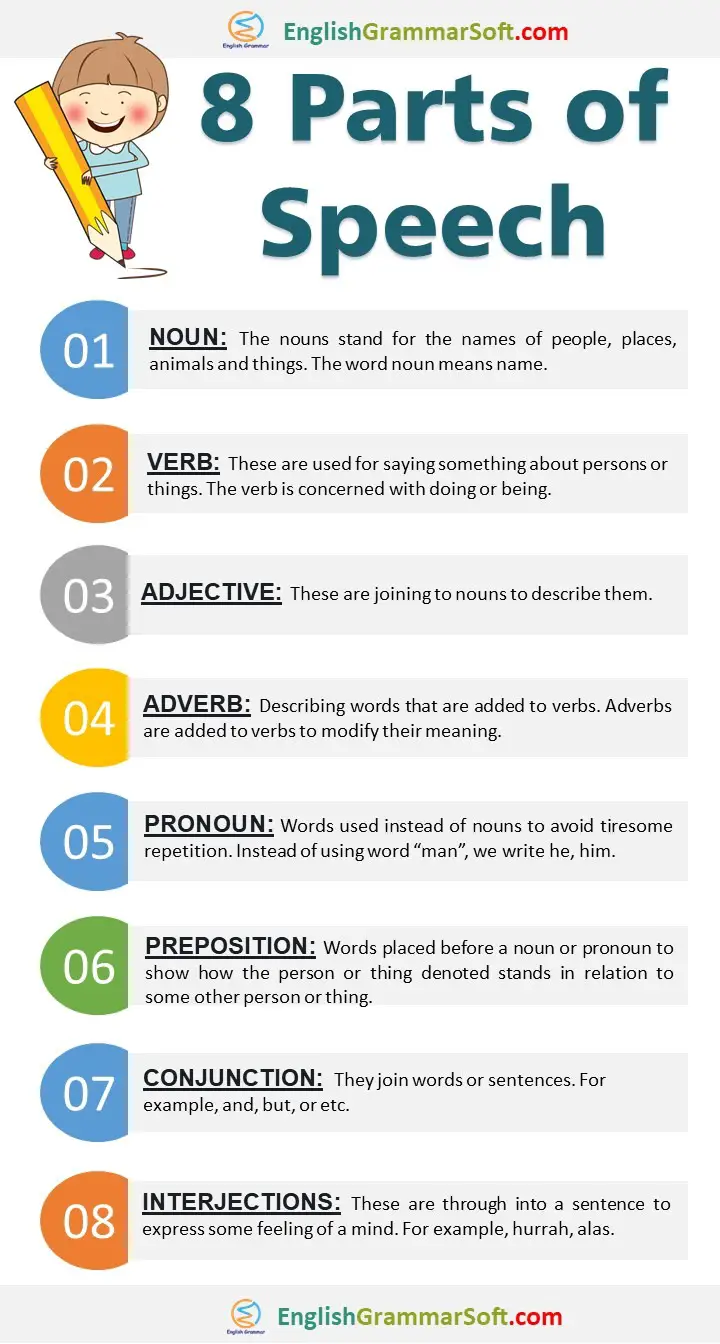
Read also: 71 Idioms with Meaning and Sentences

